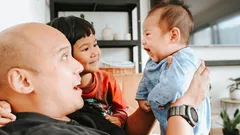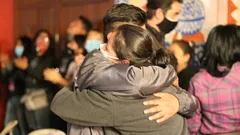
Few experiences can be as intense and confusing as the love-hate relationship. The emotional rollercoasters that happen not only in romantic relationships but also among families and friends, mix deep love and wonder. Based on my personal conversations and professional insights, it's more about the coexistence than the conflict that makes these connections appealing and overwhelming.
The Dual Nature of Love and Hate
Contrary to what movies show, loving and hating each other don’t have to be mutually exclusive. You might treasure your partner’s affection but be frustrated with their indifference, or enjoy a friend's humor but resent their lack of trust. These conflicting emotions can swing rapidly or stay hidden, influencing every interaction.
Why Do Love-Hate Relationships Happen?
Love-hate dynamics usually come from unresolved conflicts or unmet needs. Sometimes, these point to deeper incompatibilities—different values, ways of communicating, or dreams for the future. Small annoyances can grow into bigger issues if left unspoken. Over time, negative emotions can overshadow affection and leave both people emotionally tired.
"It's possible to deeply love the same person you can't stand in certain moments. That intensity, while exciting, can also drain you if not handled well."
Examples like constant arguments followed by passionate make-ups, jealousy, or a cycle of breaking up and getting back together are classic signs. Emotional Ambivalence—feeling anger and warmth in equal measure—is a trademark of these types of relationships.
Warning Signs to Watch For
- Continuous highs and lows
- Conflict that leads to intense intimacy
- Uncertainty or confusion about the relationship
Other red flags can include patterns of betrayal, possessiveness, or apathy. At this point, you have to wonder: Is this just passionate love or is it turning into something unhealthy? The shift from love to hate usually stems from broken trust or ongoing dissatisfaction—conflicting values can often play a huge role, too.
Emotional Consequences and Ambivalence
In a love-hate bond, emotional chaos is normal. The attraction can be thrilling but the tension and confusion are hard to ignore. Emotional ambivalence doesn’t just happen in romance—think about an activity you both love and hate, or food you crave but regret. When these feelings become a major force in your relationship, your own well-being can be at risk.
Understanding Dysfunctional Love
Dysfunctional love refers to situations where stress outweighs joy and comfort. Having conflict doesn’t automatically mean a relationship is doomed—no partnership is perfect. But if a pattern of fighting, reconciliation, and emotional pain keeps repeating or getting stronger, there’s usually a deeper problem. Sometimes dysfunction can show up as controlling behavior or codependency.
Finding Healthier Ways Forward
Navigating through these complicated dynamics needs open communication and clear boundaries. If you’re involved in a relationship like this, it helps to ask if the good times are enough to outweigh the pain. Getting professional help—whether couples or individual therapy—can help you explore these feelings and decide on your next steps. I’ve seen that even small changes, like regular self-checks or setting healthier boundaries, can shift the relationship in a better direction.
Many ask, how do you know when to walk away from a relationship you love to hate? Listening to your own intuition and prioritizing mutual respect and safety—these are your best guides.
 Meg Magazine
Meg Magazine















Comments